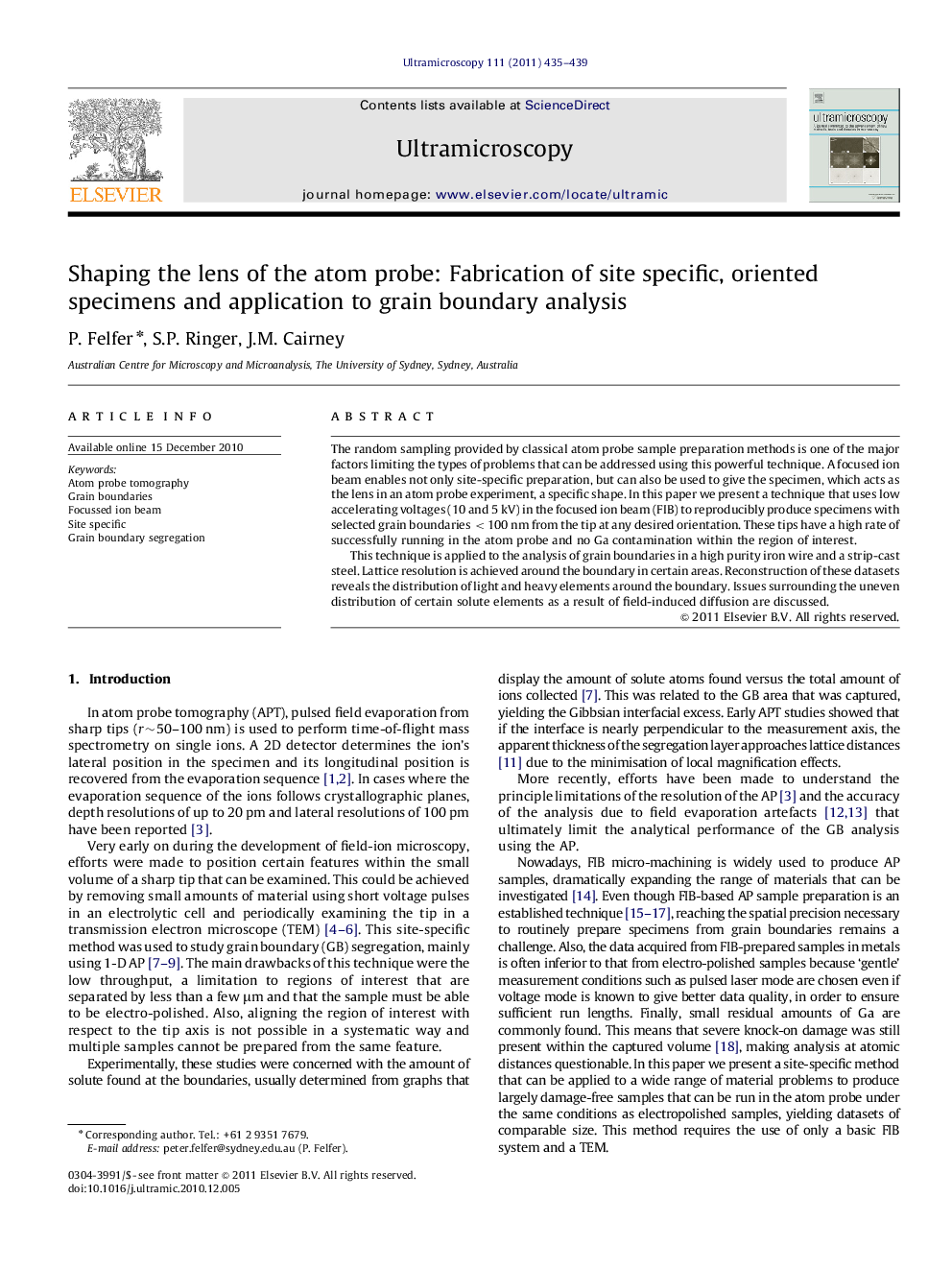| Article ID | Journal | Published Year | Pages | File Type |
|---|---|---|---|---|
| 1677966 | Ultramicroscopy | 2011 | 5 Pages |
The random sampling provided by classical atom probe sample preparation methods is one of the major factors limiting the types of problems that can be addressed using this powerful technique. A focused ion beam enables not only site-specific preparation, but can also be used to give the specimen, which acts as the lens in an atom probe experiment, a specific shape. In this paper we present a technique that uses low accelerating voltages (10 and 5 kV) in the focused ion beam (FIB) to reproducibly produce specimens with selected grain boundaries <100 nm from the tip at any desired orientation. These tips have a high rate of successfully running in the atom probe and no Ga contamination within the region of interest.This technique is applied to the analysis of grain boundaries in a high purity iron wire and a strip-cast steel. Lattice resolution is achieved around the boundary in certain areas. Reconstruction of these datasets reveals the distribution of light and heavy elements around the boundary. Issues surrounding the uneven distribution of certain solute elements as a result of field-induced diffusion are discussed.
Research highlights► Damage free site specific samples can be made using FIB. ► Crystallographic relationships across grain boundaries can be obtained from field desorption patterns. ► Lattice resolution can be achieved at grain boundaries for matrix atoms. ► Field evaporation artifacts are observed at grain boundaries for solute atoms.
